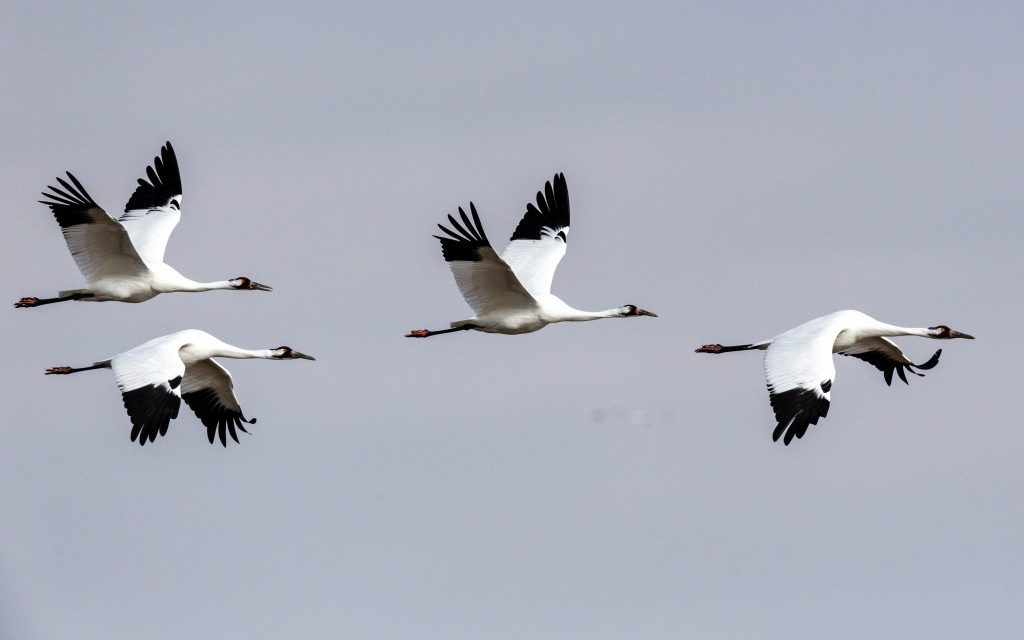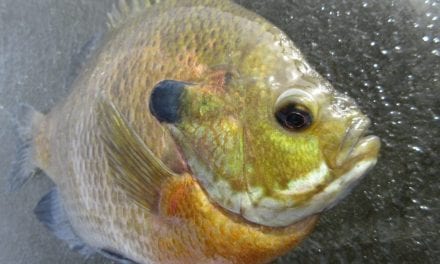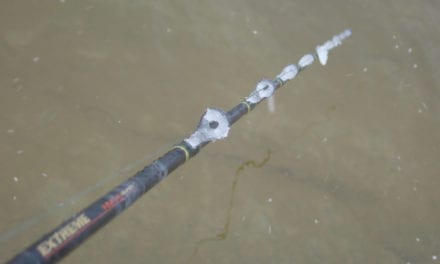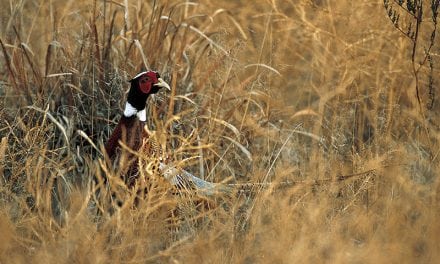Enlarge
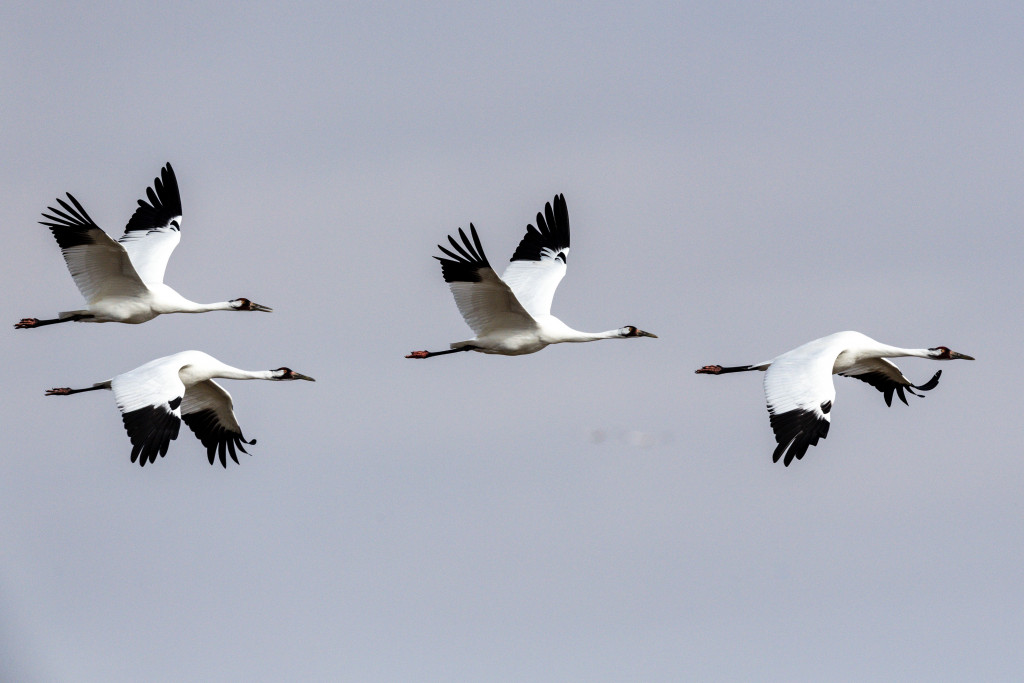
Story and Photos by Eric Fowler
My phone almost always rings when whooping cranes show up in the central Platte River valley. A good friend, who simply appreciates seeing the tallest and rarest bird in North America, called in early November. So did another. There weren’t just a few whooping cranes on the river: There were a lot of them.
When I had a chance to head west from Lincoln with my camera on Nov. 7, I was rewarded with something that was not just rare, it also was unprecedented: a historic gathering of 46 whooping cranes on the Platte. It was the most recorded anywhere in North America outside a fall migration staging area in Saskatchewan and their wintering grounds at Aransas National Wildlife Refuge on the Gulf Coast in Texas.
On that morning, the birds congregated on the river just a half-mile downstream of the South Alda Road bridge on land owned by the Crane Trust, one of many groups working to manage the river and surrounding landscape for whooping cranes and other species. The Central Platte Natural Resources District viewing deck and roadside at the bridge were filled with birdwatchers who flocked there to witness the gathering.
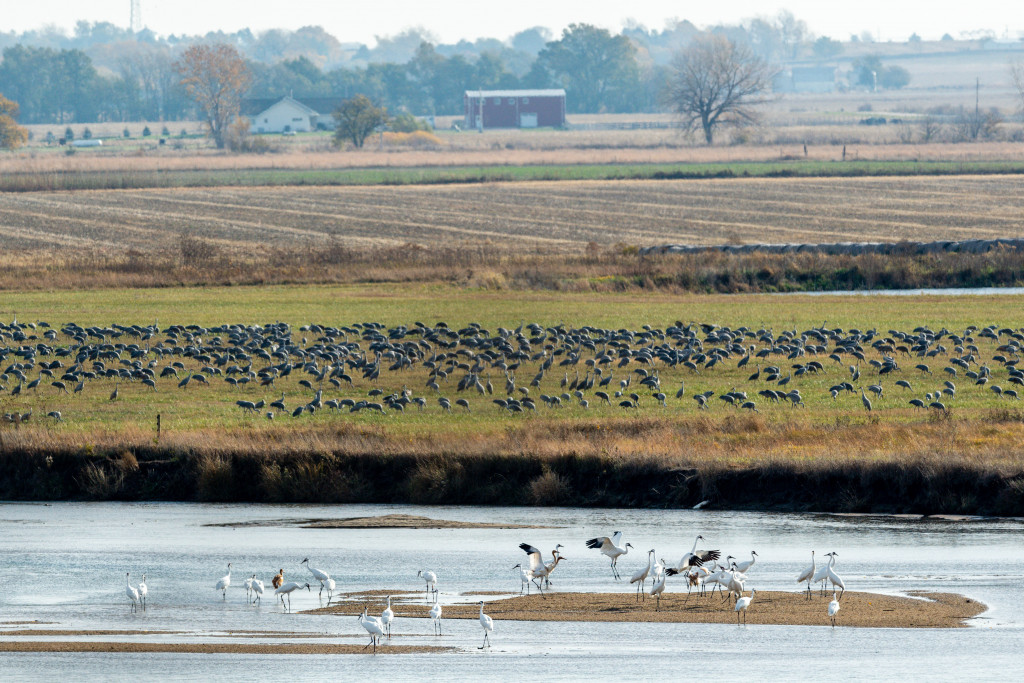
Crane Trust staff and volunteers joined me at a Trust viewing blind above the river.
“It’s just amazing to see that many whooping cranes all at once,” said Colleen Childers of Grand Island after watching and photographing the birds. “We’re part of history!”
On several mornings each week in the spring and fall, Childers is above the river in a Cessna, counting whooping cranes on the river and in nearby fields as part of an official survey conducted by Headwaters Corporation for the Platte River Recovery Implementation Program.
Those flights had documented 11 other whoopers on the Platte that day, including eight at the National Audubon Society’s Lillian Annette Rowe Sanctuary near Gibbon and three more on Platte River Recovery Implementation Program property. That single day count of 57, repeated each day Nov. 3-8, was an all-time high on the Platte, topping the previous record of 35 from the spring of 2018 and smashing the previous fall record of 20 in 2019.
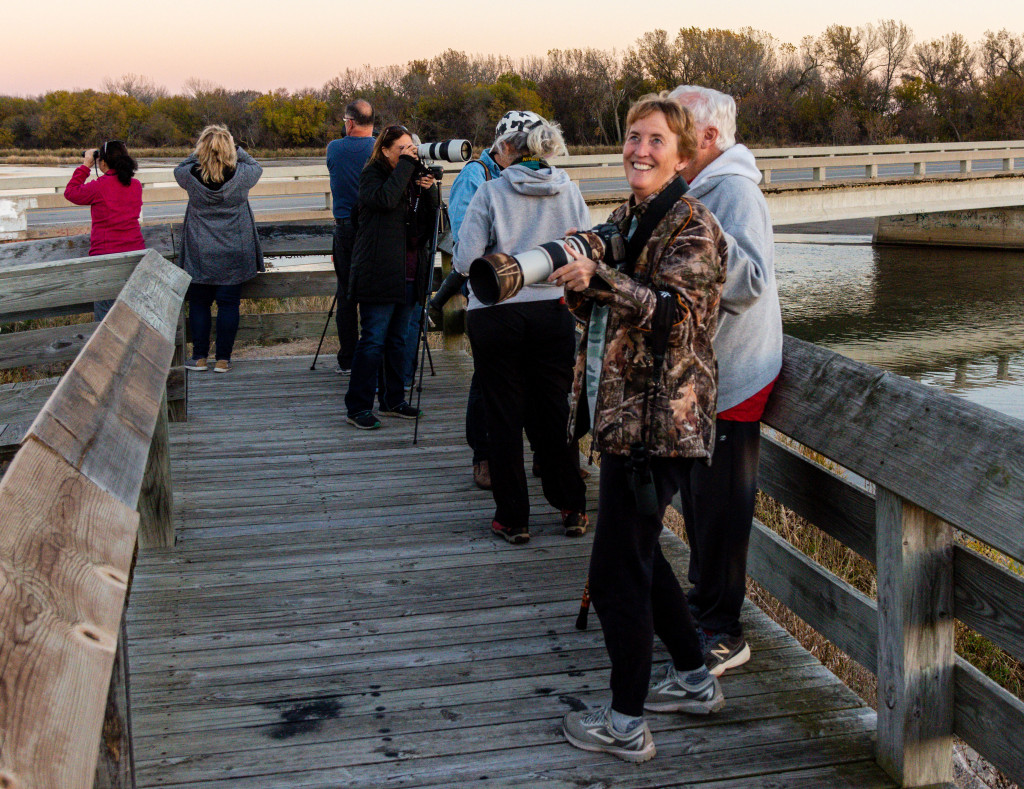
The count was roughly 11 percent of the 506 birds in the migratory population that breeds at Wood Buffalo National Park in Canada and winters in Texas, following a 200-mile-wide migration route between those areas.
A day earlier, the same group of 46 whoopers, representing every bird crews had spotted on the 20 miles of river between Shelton and Doniphan, were spotted in a nearby cornfield.
Mallory Jaymes, a biologist who coordinates the survey flights for Headwaters, said the first whooping cranes to arrive in Nebraska on their southward migration this fall were three adults spotted at Rowe Sanctuary on Oct. 23. Three other groups totaling 19 birds were spotted on Oct. 31. More arrived Nov. 1 and 2, but with survey flights scratched for poor weather, they weren’t officially counted until Nov. 3. For nearly a week, 57 whoopers were present on the river. They began leaving under north winds on Nov. 8. The last birds to head south, a family group of two adults and a juvenile, departed Nov. 17.
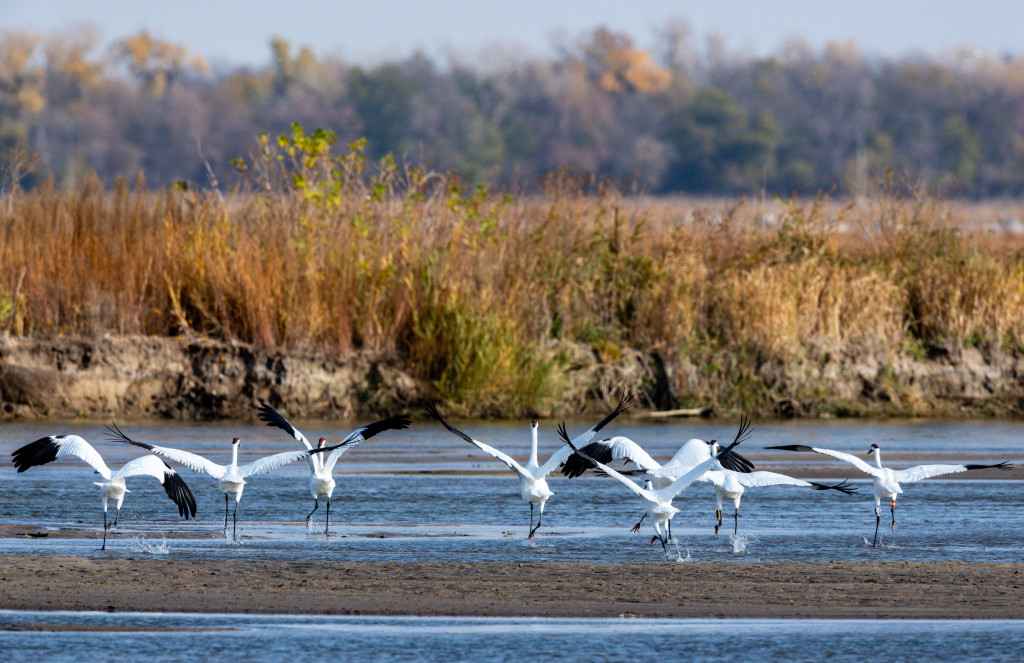
in Hall County. Photo by Eric Fowler.
The survey flights have been conducted daily, weather permitting, since 2001 and from early March to mid-April and early October to mid-November. Each morning before sunrise, two planes leave airports in Kearney and Grand Island with a pilot and two trained observers, each flying half of the 90-mile stretch of river between Lexington and Chapman searching for whooping cranes. On their return flight to the airports, they fly transects to survey specific wetlands. Observations from the air are confirmed by crews on the ground coordinated by Headwaters Corporation. The surveys are designed to determine how whooping cranes are responding to land and water management activities in the Platte Valley.
In all, the surveys determined that 88 whooping cranes stopped on the Platte this fall. This established a new record for the fall, topping the previous high of 42 in 2019. The top count in the spring was 120 in 2018. Surveys conducted by the U.S. Fish and Wildlife Service located additional whooping cranes, bringing the total count to 97, 20 percent of the migratory population and matching the number in the population in 1987.
“We usually get quite a few more whoopers that stop in the spring than in the fall,” Jaymes said. “We’ve had more individuals stop in the spring, but this fall is really the anomaly.”
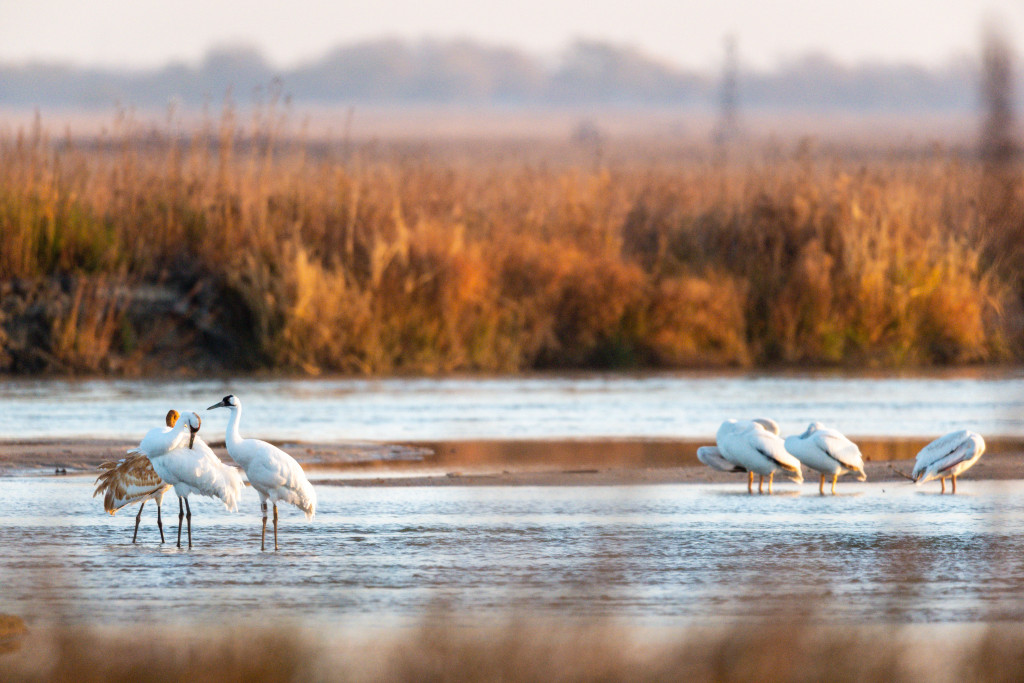
Jaymes said the ground observations can typically identify unique groups of cranes that make it possible to get an accurate count. That became impossible when the birds bunched up this fall. “Usually, they kind of stay within their family groups, and this group just kind of socialized, which was cool to see,” she said.
Dave Baasch, the threatened and endangered species specialist with the Crane Trust, said the high daily counts of whooping cranes this fall were due to several factors lining up. Weather conditions delayed the migration and held birds in Saskatchewan. When conditions were favorable, many of them made it to the Platte River at once, and then strong southerly winds kept the birds here.
“It’s never happened before, and it’s possible that it could happen again, but not highly likely,” Baasch said.
The whooping crane was one of the first species to gain protection under the Endangered Species Act in 1970. The migratory population that passes through Nebraska twice each year had dipped to just 18 individuals in 1945, decimated by hunting and the loss of nesting habitat. The bird had never been abundant due in part to its delayed reproductive maturity and a reproduction rate of less than one chick annually. A record number of nests were observed in Canada this summer, and Baasch said the population could top 520 individuals when surveys are completed in Texas this winter.
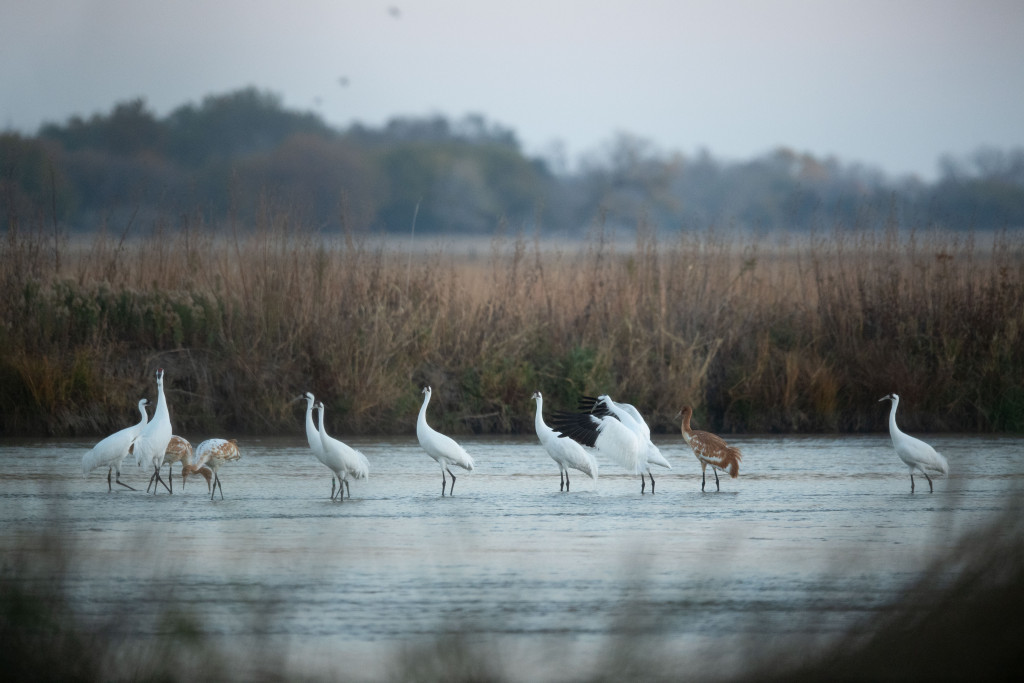
A second migratory flock has been established that moves between Wisconsin, part of its historic nesting range that extended across the north-central U.S. into central Alberta, and Florida. A nonmigratory flock was restored in Louisiana. Between the three wild populations and captive birds, there are just 800 whooping cranes in the world.
While the birds don’t always stop, the big bend reach of the Platte River in central Nebraska is one of four areas in the U.S. determined to be critical habitat for the species. The Crane Trust, the Nature Conservancy, the Audubon Society, the Platte River Recovery and Implementation Program, Nebraska Game and Parks Commission, U.S. Fish and Wildlife Service and others have worked to restore and protect habitat for the birds, as well as for other threatened and endangered species: the interior least tern, piping plover and pallid sturgeon. This work also benefits the roughly 1 million sandhill cranes that stop each spring and other wildlife, too.
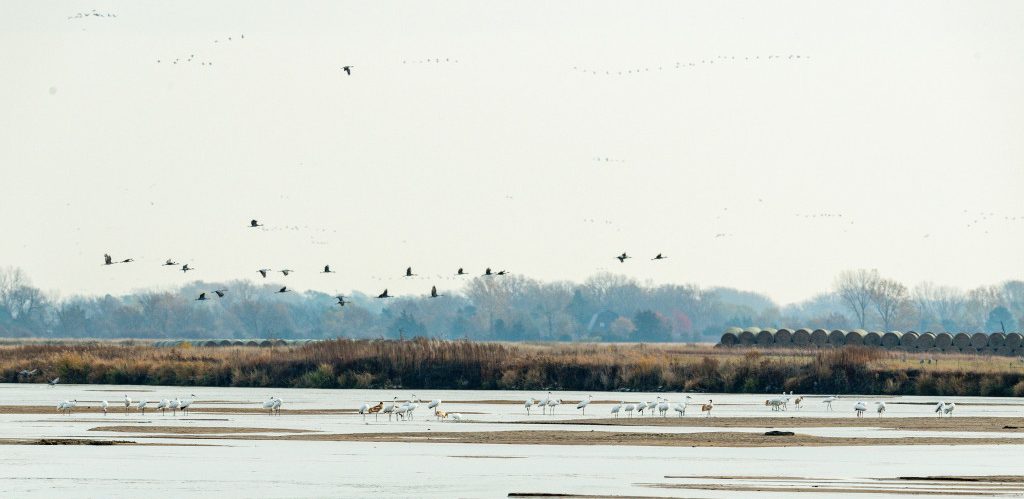
The day after the large group of cranes gathered near the South Alda Road bridge, I found more than 30 whooping cranes a few miles upriver on a stretch that flows between my friend’s property and property owned and managed by the Platte River Recovery Implementation Program. I photographed them from a distance until they left to feed in the morning. I returned to the river when they did, lying in brush on the bank for more than two hours as they loafed and foraged. A few juveniles playfully danced, but most of the birds simply stood facing into the strong north wind. By noon, most of the birds, one family group or small flock at a time, lifted their wings, put that wind to their back and continued their migration; the survey flight found just 17 birds on the river the following day.
I hope to see some of them again this spring. ■
The post A Historic Gathering: Whooping Cranes appeared first on Nebraskaland Magazine.

